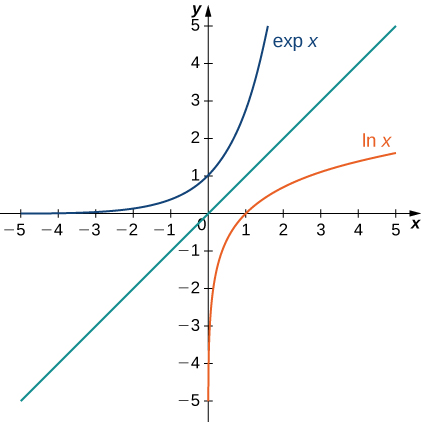| << Chapter < Page | Chapter >> Page > |
The following figure shows the graphs of and

We hypothesize that For rational values of this is easy to show. If is rational, then we have Thus, when is rational, For irrational values of we simply define as the inverse function of
For any real number define to be the number for which
Then we have for all and thus
for all
Since the exponential function was defined in terms of an inverse function, and not in terms of a power of we must verify that the usual laws of exponents hold for the function
If and are any real numbers and is a rational number, then
Note that if and are rational, the properties hold. However, if or are irrational, we must apply the inverse function definition of and verify the properties. Only the first property is verified here; the other two are left to you. We have
Since is one-to-one, then
□
As with part iv. of the logarithm properties, we can extend property iii. to irrational values of and we do so by the end of the section.
We also want to verify the differentiation formula for the function To do this, we need to use implicit differentiation. Let Then
Thus, we see
as desired, which leads immediately to the integration formula
We apply these formulas in the following examples.
Evaluate the following derivatives:
We apply the chain rule as necessary.
Evaluate the following integral:
Using -substitution, let Then and we have
We close this section by looking at exponential functions and logarithms with bases other than Exponential functions are functions of the form Note that unless we still do not have a mathematically rigorous definition of these functions for irrational exponents. Let’s rectify that here by defining the function in terms of the exponential function We then examine logarithms with bases other than as inverse functions of exponential functions.
For any and for any real number define as follows:
Now is defined rigorously for all values of x . This definition also allows us to generalize property iv. of logarithms and property iii. of exponential functions to apply to both rational and irrational values of It is straightforward to show that properties of exponents hold for general exponential functions defined in this way.

Notification Switch
Would you like to follow the 'Calculus volume 1' conversation and receive update notifications?